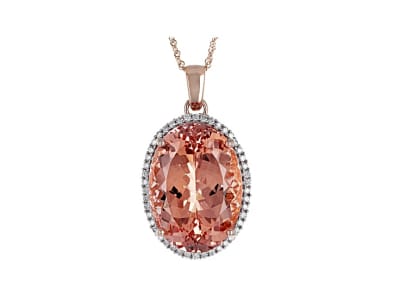Morganite is a pink to peachy or purplish pink variety of beryl. It was discovered in 1910 and named after American banker and financier J. P. Morgan. It might also be called pink beryl. Morganite gets its color from trace amounts of manganese and, to a lesser degree iron. Most morganite is free of inclusions, and fairly tough, so it is a good choice for jewelry. Two of the major sources for the stone are Brazil and Madagascar.
General Information
LWUV: Inert to weak pink to violetish red
Morganite Colors
-
 Orange
Orange -
 Pink
Pink -
 Pink
Pink
Alternate Names
Pink Beryl, Rose Beryl, Cesian
Countries of Origin
Tanzania, United Republic Of; Myanmar; Afghanistan; Russian Federation; Cambodia; Czechia; United States of America; Madagascar; Thailand; Mongolia; Mozambique; Pakistan; Morocco; Unknown; China; Brazil; Nigeria; Argentina; Sri Lanka; Bolivia (Plurinational State of); India; Canada; Norway; Namibia; Italy; Mexico; South Africa; Zimbabwe; Australia; Tajikistan
History
Morganite is the pretty-in-peachy-pink variety of beryl and a sister to the acclaimed emerald. The ultra-feminine colors of morganite have made it a favorite of women of all ages. Named for the financier and gem enthusiast JP Morgan, this lovely stone has wonderful qualities: it's durable, has a high luster, is available in clear stones of relatively large size and is quite brilliant. In short, it's everything women love in a gemstone.
Care
Remember to keep your morganite away from chemical cleaners and ultrasonic machines. Clean it with warm soapy water and a gentle brush. If you do, this little pretty will delight you for the rest of your life.



